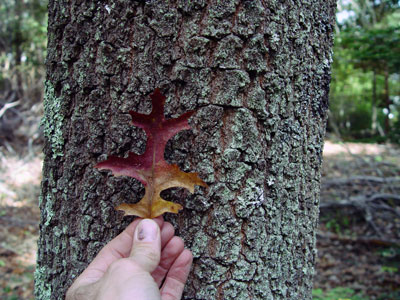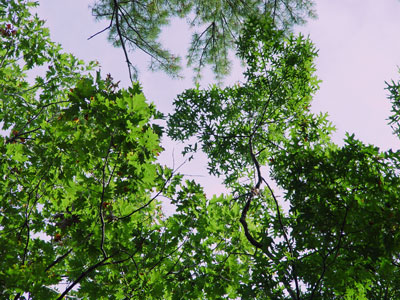DACF Home → Bureaus & Programs → Maine Natural Areas Program → Communities, Plants, and Animals → Rare Plants → Quercus coccinea

Quercus coccinea Muenchh.
Scarlet Oak
- State Rank: S1
- Global Rank: G5
- State Status: Endangered
Habitat: Dry sandy soil. [Hardwood to mixed forest (forest, upland)]
Range: Southwestern Maine to Georgia, west to southern Michigan, Missouri, and Mississippi. This tree is widely planted as an ornamental.
Aids to Identification: Scarlet oak is identified as a member of the red oak group because of the bristle tips on its leaves and the fact that acorn development takes two years. It is unique within this group because of the following combination of characters: end buds are hairy but not angled; leaves have very deeply sinuses, with 7-9 lobes; acorn cup is shaped like a bowl (conceals 1/3-1/2 of the nut), with shiny cup-scales; and the inner bark is reddish. The nuts of this species have 1 or more rings of small pits near the apex. Black oak (Q. velutina), with which it is most likely to be confused, has strongly angled buds.

Ecological characteristics: Occurrences in Maine are limited to the sandy soils of York and Cumberland counties.
Phenology: Flowers May - June. Acorns ripen September - October.
Family: Fagaceae
Synonyms: Quercus coccinea Muenchh. var tuberculata Sarg.
Known Distribution in Maine: This rare plant has been documented from a total of 10 town(s) in the following county(ies): Androscoggin, Cumberland, Waldo, York.
Reason(s) for rarity: At northern limit of range; not rare southward.
Conservation considerations: This plant is restricted statewide to southern Maine, and known populations are vulnerable to conversion of their habitat to residential or commercial use. Populations are small and could be eliminated by logging.